Bradin Cormack is professor of English and director of the Nicholson Center for British Studies at the University of Chicago. Martha C. Nussbaum is the Ernst Freund Distinguished Service Professor in the Law School, the Department of Philosophy, and the Divinity School at the University of Chicago. Richard Strier is the Frank L. Sulzberger Distinguished Service Professor in the Department of English Language and Literature and an associate member of the Divinity School at the University of Chicago.
The University of Chicago Press, Chicago 60637
The University of Chicago Press, Ltd., London
2013 by The University of Chicago
All rights reserved. Published 2013.
Printed in the United States of America
22 21 20 19 18 17 16 15 14 13 1 2 3 4 5
ISBN-13: 978-0-226-92493-9 (cloth)
ISBN-13: 978-0-226-92494-6 (e-book)
ISBN-10: 0-226-92493-9 (cloth)
ISBN-10: 0-226-92494-7 (e-book)
Library of Congress Cataloging-in-Publication Data
Shakespeare and the law : a conversation among disciplines and professions / edited by Bradin Cormack, Martha C. Nussbaum, and Richard Strier.
pages cm
This collection emerges out of a conference on Shakespeare and the law held at the University of Chicago in spring 2009introduction.
Includes bibliographical references and index.
ISBN 978-0-226-92493-9 (cloth : alkaline paper)
ISBN 978-0-226-92494-6 (e-book)
ISBN 0-226-92493-9 (cloth : alkaline paper)
ISBN 0-226-92494-7 (e-book) 1. Shakespeare, William, 15641616KnowledgeLawCongresses. 2. Law in literatureCongresses. 3. Shakespeare, William, 15641616Criticism and interpretation. I. Cormack, Bradin, editor. II. Nussbaum, Martha Craveh, 1947 editor. III. Strier, Richard, editor.
PR3028.S533 2013
822.3'3dc23
2012029394
 This paper meets the requirements of ANSI/NISO Z39.48-1992 (Permanence of Paper).
This paper meets the requirements of ANSI/NISO Z39.48-1992 (Permanence of Paper).
SHAKESPEARE AND THE LAW
A CONVERSATION AMONG DISCIPLINES AND PROFESSIONS
Edited by BRADIN CORMACK, MARTHA C. NUSSBAUM, and RICHARD STRIER
THE UNIVERSITY OF CHICAGO PRESS
Chicago and London
CONTENTS
BRADIN CORMACK, MARTHA C. NUSSBAUM, and RICHARD STRIER
DANIEL BRUDNEY
BRADIN CORMACK
LORNA HUTSON
CONSTANCE JORDAN
RICHARD H. MCADAMS
RICHARD A. POSNER
CHARLES FRIED
DAVID BEVINGTON
RICHARD STRIER
KATHY EDEN
STANLEY CAVELL
MARIE THERESA OCONNOR
MARTHA C. NUSSBAUM
DIANE P. WOOD
BRADIN CORMACK, MARTHA C. NUSSBAUM, and RICHARD STRIER
INTRODUCTION
SHAKESPEARE AND THE LAW
Shakespeares Law
Shakespeares most famous character offers us a striking entry into the question of how Shakespeare responded to the law and legal systems he lived under. Standing at the edge of a grave whose tenants are being evicted to make room for a new owner, the prince picks up a skull (not the famous one) and, supposing it to belong to a lawyer, meditates on the law and its limitations:
Theres another [skull]. Why may not that be the skull of a lawyer? Where be his quiddities now, his quillities, his cases, his tenures and his tricks? Why does he suffer this mad knave now to knock him about the sconce with a dirty shovel, and will not tell him of his action of battery? Hum! This fellow might be in s time a great buyer of land, with his statutes, his recognizances, his fines, his double vouchers, his recoveries. Is this the fine of his fines, and the recovery of his recoveries to have his fine pate full of fine dirt! Will his vouchers vouch him no more of his purchases, and double ones too, than the length and breadth of a pair of indentures? (Hamlet 5.1.93103)
Hamlets punning questions about the laws means and ends pull the audience in two directions at once, away from the law but also, in complex ways, toward it. The satire strikes firstthe spate of legal terms and Hamlets articulation of the gap between the knowledge and practices that make the lawyer what he is and the place (literally) where that fancy technical knowledge ends up. The lawyer is satirized for his schemes to get, presumably, as much land as possible and also, more directly, for forgetting how fleeting the world and its rewards are. This is a common forgetfulness, but the lawyers work puts him in a special relation to it. His vouchera voucher is a guarantee to title in land transactionsemblematizes untrustworthiness generally because, as a legal document, it embodies the whole process of substituting formal instruments for the real bonds between persons that would make such things unnecessary. The voucher was useful in a common-law case because everyone involved recognized that it was not going to be a guarantee at all. In this sense, Hamlets insistence that the legal voucher is empty (because it must ultimately betray the lawyer) responds to the fact that the voucher was already emptied out in contemporary lawand its emptiness is precisely what made it useful.
If Shakespeares exposure of the laws guarantee as differently fictive thickens the satire, it also has the contrary effect of pulling the engaged audience toward the laws ingenuity in achieving its ends, with the law absorbing some of Hamlets scintillating capacity to make words do extraordinary things, sometimes against themselves. The princes jab at his imaginary lawyer shows Shakespeare inviting the audience to judge the laws turns and tricks but also to linger in the inventiveness of its forms.
The technical playfulness in Hamlets take on lawyers identifies a first point about Shakespeares dramatic representation of English law. As the essays in this volume variously demonstrate, a gesture in the plays that may at first look like a simple allusion to a legal concept or practice often points to a deeper engagement with how legal professionals organized the world, whether in relation to the laws technical workings or its underlying premises or its social effects. Even when Shakespeare seems merely to be decorating his dialogue with some legal word he has picked up (no specialist he!), Shakespeare is capable of great precision in his understanding of how law works and what it is for.
Hamlets mockery also helps us think about Shakespeares legal thinking in a second way. The speech compactly indexes the various registers or modes in which the law existed. First and foremost, the law was a practice or activity, a set of actions undertaken by various institutional actors (e.g., common lawyers, canon lawyers, common-law judges, ecclesiastical judges, sheriffs, bailiffs, jurors, jailers, clerks, scriveners) for the ordering of society. Hamlets bookish lawyer acts in the laws way, a point emphasized through the satirical comparison of the gravediggers battery as one kind of action (primary, direct) and the laws battery as another kind (secondary, indirect). Second, the law was a body of doctrine, rules and norms that shifted over time as lawyers and judges, in different venues, worked either to fit the law to changes in society or to manage more efficiently (and ever more ingeniously) the problems confronting them. Third, the law functioned as an idea or, better, a cluster of ideas: if in one respect law was the very image of justice, it could also be seen, in Hamlets way, as an imperfect vehicle in an imperfect world, at best a workable substitute for the unreachable ideal and at worst a machine to cover unethical behavior. Fourth, the law was recognizably a profession, by Shakespeares time a main route to social and political advancement. As such, the law was a site both for nationalist pride (with the common lawyer taking the role of protector of English liberties) and for intense resentment (with the lawyer taking the role, as in Hamlets portrait, of self-interested and mercenary scoundrel). Finally, as a
Next page
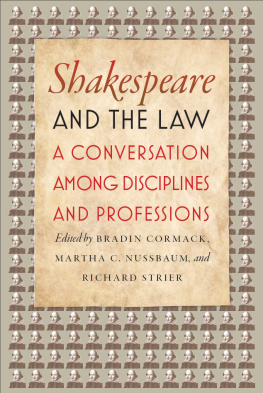
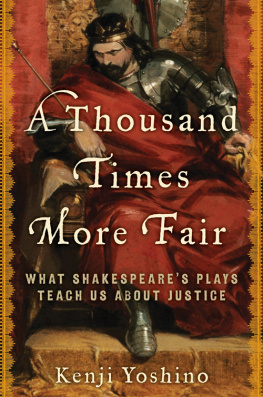

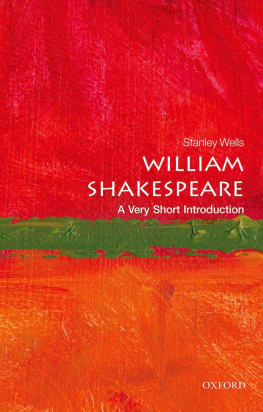
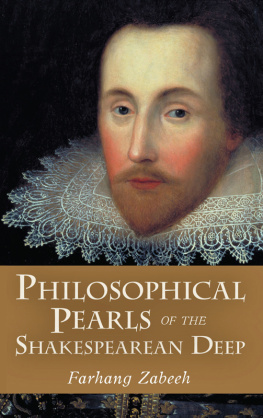
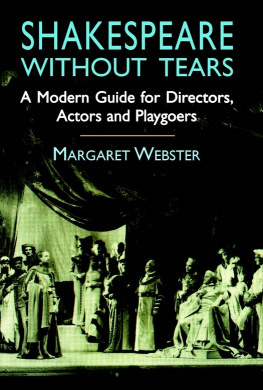
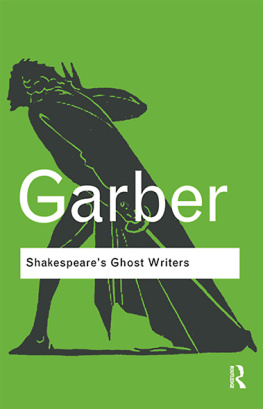



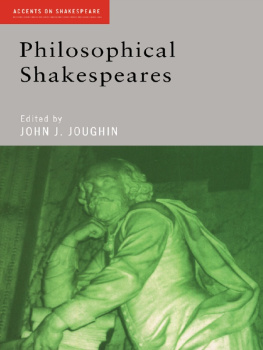
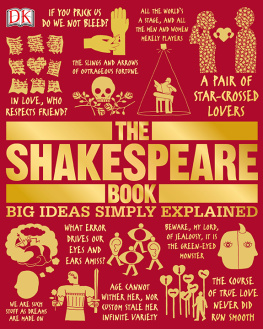
 This paper meets the requirements of ANSI/NISO Z39.48-1992 (Permanence of Paper).
This paper meets the requirements of ANSI/NISO Z39.48-1992 (Permanence of Paper).